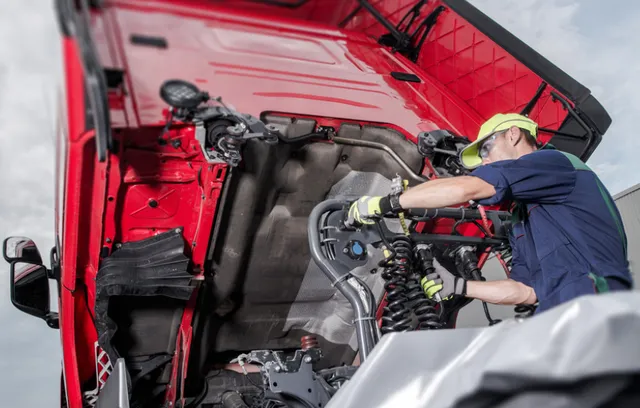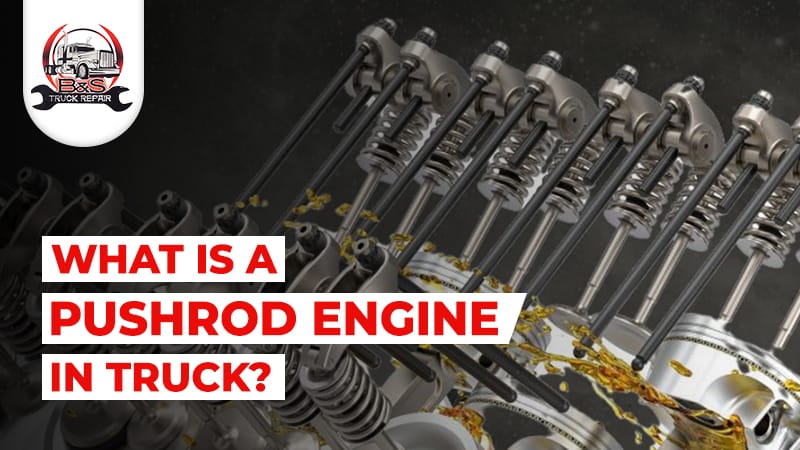An engine with a pushrod is a simple yet reliable component seen in older American vehicles. If your automobile is older, it probably has one of these engines. At the speed at which the push rod engine rotates, pushrods can withstand hundreds of pounds of pressure applied thousands of times a minute. Pushrod engines still have advantages that make them appropriate for some applications, even if they cannot match the performance of more modern designs like overhead cam engines in many areas.
The pushrod engine is a model of internal combustion engine that often appears in trucks. Pushrods can open the intake and exhaust valves on this engine, hence the name. A comprehensive review of pushrod engines’ functioning, along with some of their unique qualities, which make them suited for usage in trucks, will be provided in this blog.
What Do Pushrods Do?
The pushrods are the essential parts of a pushrod engine that allow the valves to open and close. Pushrods are lengthy metallic rods, as their name suggests, that run from the engine’s lower camshaft to the rocker arms, which are located above the cylinder heads.
As the cam spins, the mechanisms that ride on top of the rectangular lobe-shaped camshaft glide upwards and downwards. The pushrods subsequently transmit this repeating action to the rocker arms. To open the valves, the pushrods’ up-and-down action is transformed into a swinging motion by the pivoting rocker arms. As a result, the camshaft can be positioned lower in the block instead of higher.
What is a Pushrod Engine?
The critical elements of a push rod engine include the following:
- The camshaft and crankshaft are both housed in the crankcase. Its revolving lobes activate the lifters above it.
- Lifters travel along the camshaft surface while perched atop the cam lobes. Give the pushrods the motion of the cam.
- Pushrods: Tubular rods that reach the cylinder heads and transmit the lifters’ lifting motion.
- Rocker arms: rotating levers that translate the pushrods’ upward and downward action into sideways valve movement.
- The parts that let the valves open and close are known as the valvetrain. These parts include the springs, retainers, and valves.
- Because of the straight path, this arrangement provides optimum ventilation from the intake system into the engine’s combustion chamber. Its small footprint also makes high-performance Truck engine layouts possible.
How Does a Pushrod Engine Work?
A pushrod engine runs as follows in essential operation:
- With different-shaped lobes, the camshaft rotates in the engine’s bottom.
- The lifters that travel across the cam profile get pushed up against the lobes as they revolve.
- The lengthy pushrods run up to the rocker’s arms, transmitting the lifters’ upward action.
- For the correct timing of valve opening, the rocker arms move back and forth.
- The intake valve opening allows fuel/air mixture to enter the cylinder during the intake stroke.
- Once combustion has occurred, the valve that releases gases opens to release the exhaust gasses.
- The smooth power-generating intake, compression, and exhaust strokes are made possible by the accurate timing and synchronization of these elements.
What Causes Bent Pushrods in Trucks?
The positioning of the valve is another thing to consider. For an engine to run smoothly, valve adjustment must be done correctly. Overly strong force may be supplied to the pushrods if the valves are not set correctly. They may eventually bend as a result of this additional tension. Thus, avoiding bent pushrods requires routine maintenance and ensuring the valves have been adjusted correctly.
A few common factors can cause bent push rods in high-mileage truck engines:
- Worn camshaft lobes: The pushrods are under more stress when the lobe profiles are reduced.
- Sticking lifters: Pushrod forces are uneven when lifters are stuck and cannot move freely.
- Low oil pressure: Friction and wear are accelerated by an inadequate lubricant.
- Blockages in the oil passages: These stop oil from getting to the upper valvetrain.
- Inadequate valve lash: An excessive space might cause valves to bounce too much.
Weak springs in the valves allow them to oscillate, which puts pressure on the pushrods. Early detection of minor pushrod problems is essential to preventing more harm from occurring.
Although uncommon, bent pushrods can occasionally happen due to manufacturing flaws or installation errors made by humans. A pushrod might be unable to endure the engine’s regular operation if placed incorrectly or has manufacturing flaws. Failure or early bending may result from this.
What Does a Bent Pushrod Sound Like?
The following sounds may be indicative of a bent push rod engine symptoms include:
- Valvetrain tapping or clicking noise.
- An unusual ticking noise.
- Audible engine noise when accelerating
- persistently uneven idling brought on by valve misfiring.
To avoid a catastrophic engine breakdown, a qualified mechanic should immediately check these signs. Bending pushrods and additional valvetrain problems can be diagnosed by the professionals at B&S Truck Repairs.
What is the Opposite of a Pushrod Engine?
Overhead cam (OHC) engines are the reverse of pushrod engines. The compression mechanism of an OHC engine is situated above the intake and exhaust valves in the cylinder head. Eliminating the need for pushrods, the lobes operate the valves.
At higher RPMs, overhead cam engines provide more accurate timing of the pistons and tuning. But producing them is more expensive and complex. Because low-end torque, simpleness, and ease of upkeep are significant, pushrod engines are still widely used in truck operations.
Will a Bad Lifter Cause a Bent Pushrod?
Indeed. The pushrods will suffer significantly from lifters that become locked and cannot follow the camshaft profile smoothly. A lifter that ceases to move up and down in tandem with the cam’s rotation places an extreme amount of side load tension on the pushrod, causing it to bend.
Lifters that are damaged must be replaced. Regular lifter maintenance and inspection help prevent this frequent reason for bent push rods. Diesel Mobile Truck Repair option with B&S Truck Repair’s professionals are experts at identifying and fixing malfunctioning lifters before they result in further damage.
What Causes Bent Pushrods in Small Engines?
While pushrods are more common in large Truck engines, specific smaller 4, 6, and 8-cylinder motors also employ them. Many of the following are also primary causes of bent pushrods:
- Inadequate valve adjusting: The valves bounce when there is too much lash or clearance.
- Unequal camshaft movement as a result of sticking or defective lifters.
- Corrosion and resistance are increased by inadequate lubrication.
- Garbage in fuel: This can impede flow and result in inadequate lubrication.
Avoiding high bent pushrod repair costs requires periodic upkeep and part replacement in smaller, powerful engines. Anticipating warning indicators such as tapping sounds can help avert costly future repairs.
Choose Best Truck Repair Shop For Your Truck Today!
- Affordable
- Quick Fix
- Boost Truck Performance

Conclusion
In truck applications, pushrod engines are prized for their power, economy, and small size. However, worn parts and poor valvetrain lubrication stress components like pushrods frequently result in bending or failure. Regular maintenance and inspection are essential to extend lifespan and prevent more severe issues. Bent pushrods may be accurately diagnosed and fixed, as well as any necessary valvetrain repairs, by the knowledgeable specialists at B&S Truck Repairs. Compared to complete engine replacements, bent push rod engine repair costs are significantly lower. To keep your truck in good operating order, contact us right now.

